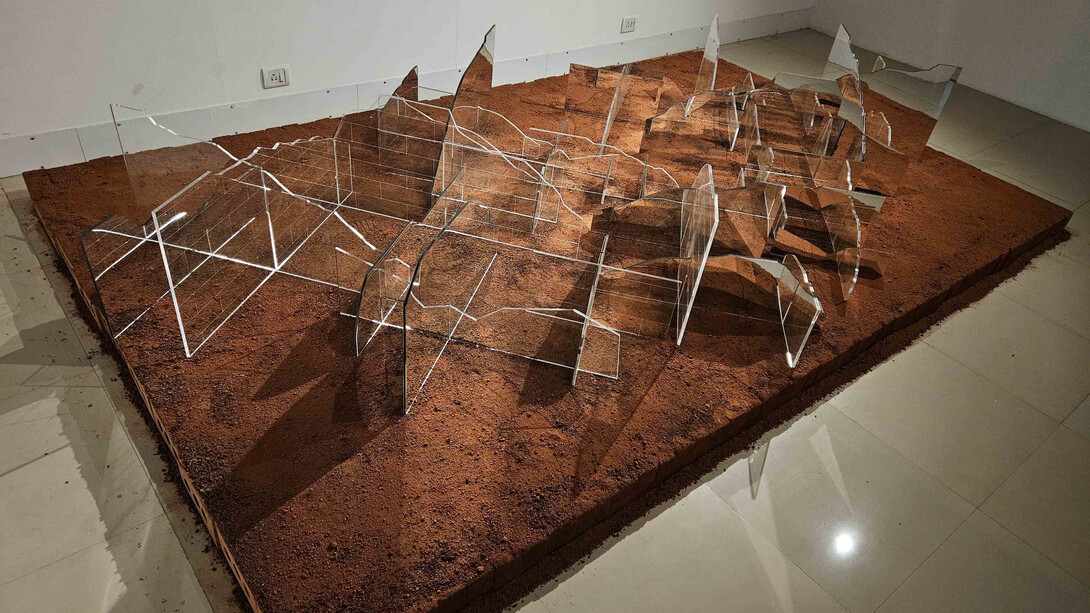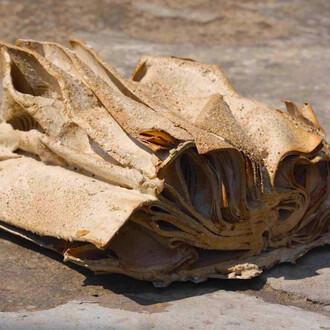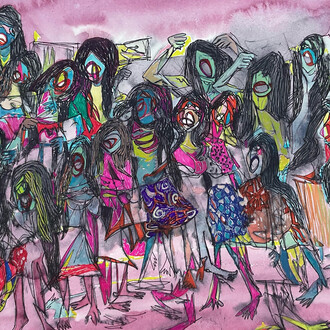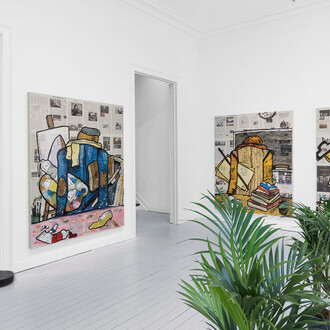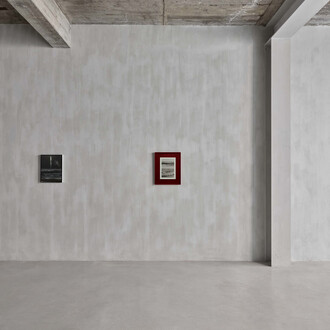Mumbai India—Sakshi Gallery is delighted to present Teja Gavankar's first solo Behind the facade, that opens on November 11, 2025 and remains on view until December 6, 2025. Gavankar's new body of work extends the artist's preoccupation with built spaces and their impact on human psychology. Amidst a backdrop of uncertainty, the artist questions notions of stability and permanence projected by architectural spaces, which often conceal fragility and displacement.
Drawing from the personal as a starting point, she examines the idea of rootedness in relation to building a home. To Gavankar home is not a romantic notion of belonging, but a place that can at times be unstable. The artist thus began to ask: what does it mean to seek stability? Is permanency necessary?
Gavankar is also interested in creating spaces of opportunity, where objects are freed from a xed function. These “opportunities” come to the fore when presented with two extremes. These embody works that take dual states, in forms that appear still but convey motion. One of the central works in the show is a large structure that takes the shape of a curtain but is constructed of brick, a rigid material. In construction, bricks are typically placed one on top of another, but here she uproots this linearity and allows the work to flow like a curtain, using metal rods. While construction material is often thought to be permanent and lasting, the works in the show are constructed in a way that enables flexibility.
Gavankar continues this line of thinking through her exploration of architectural elements such as walls, roofs, and partitions. These are forms that offer safety and protection, but can also enforce division and control. She plays with the porousness of these forms through illusion; the position from which the viewer views these works affects how they are perceived.
The artist has been interested in the interplay between natural and built environments having lived in the bustling city of Mumbai, but in its suburbs, close to Sanjay Gandhi National Park. On her daily commute, she takes in the green pockets of the city, noticing how natural forms, in themselves, have structure. The works in this show reect this conuence: a collection of constructed forms that, at times, take the outline of organic forms, mirroring one another while co-existing.
In 2022, the artist was commissioned to design a mural for Sakshi's exterior facade. In many ways, her debut solo exhibition at the gallery extends the gesture inwards, from exterior to interior, exploring how form, architecture and human psychology intersect, and how they shape the way we feel and move.
